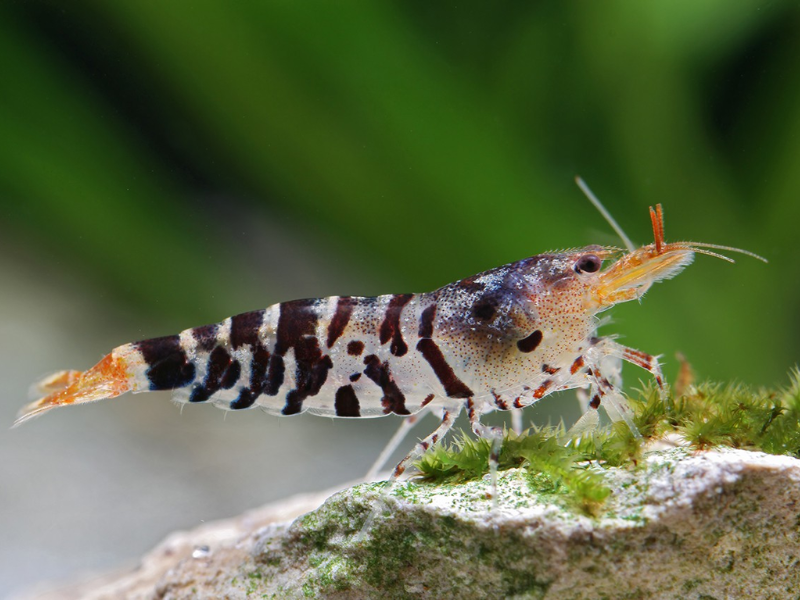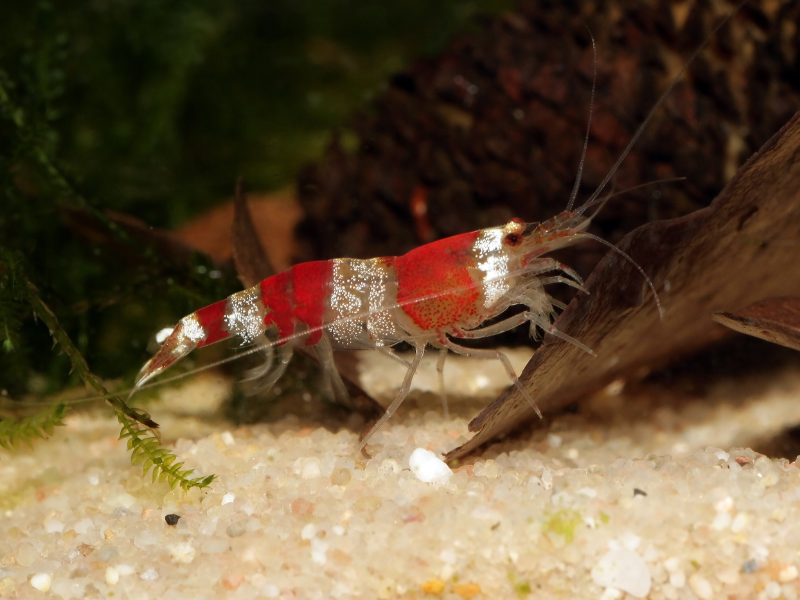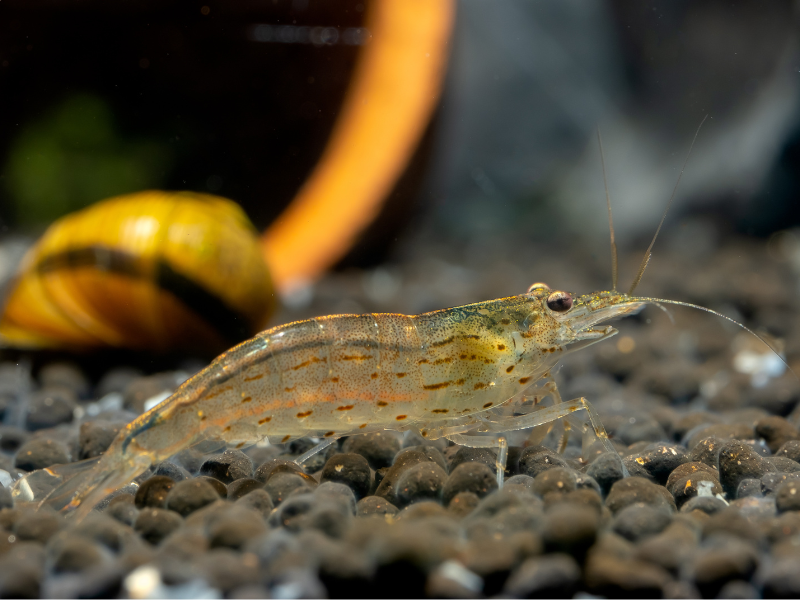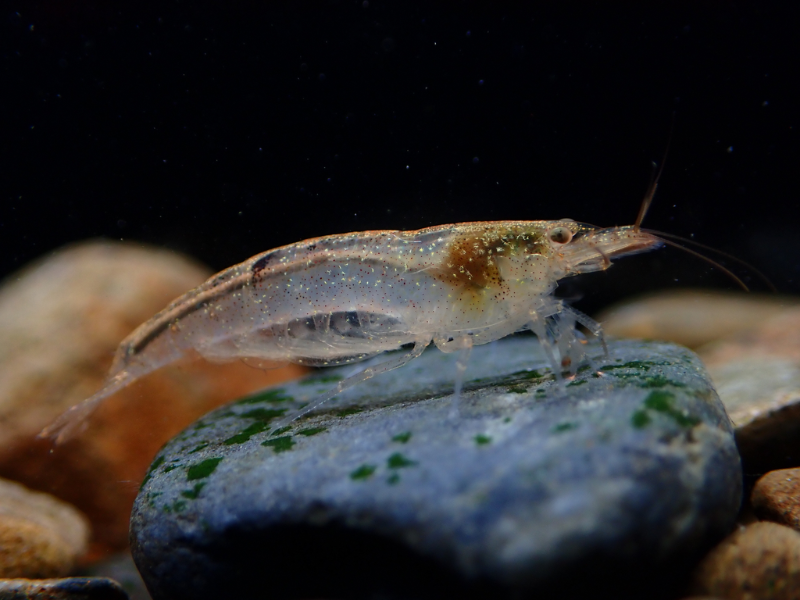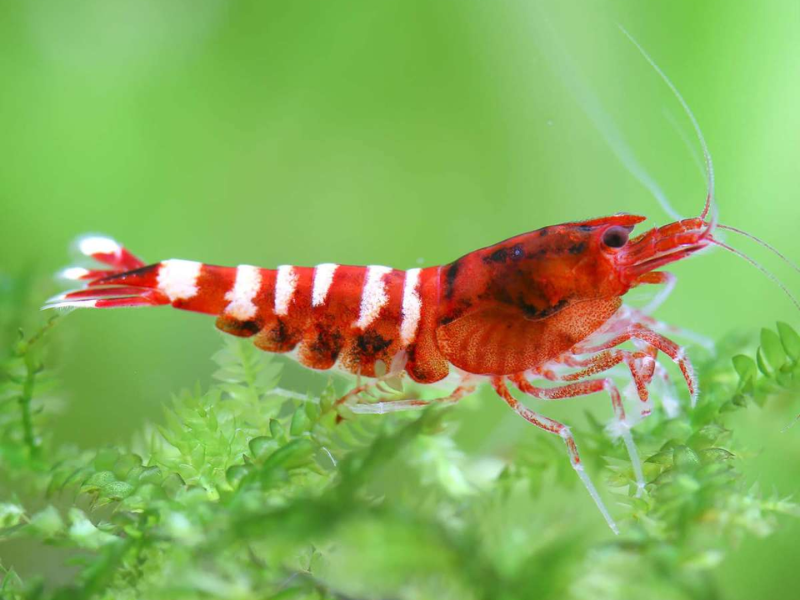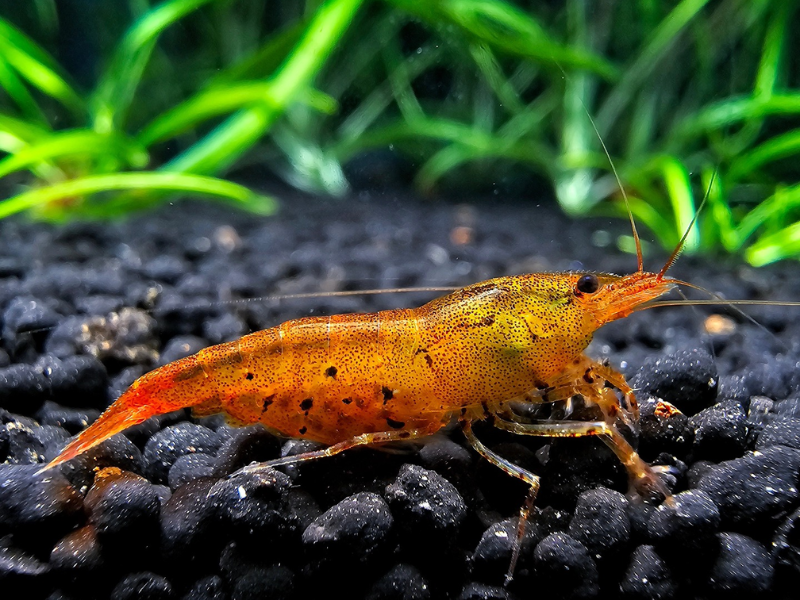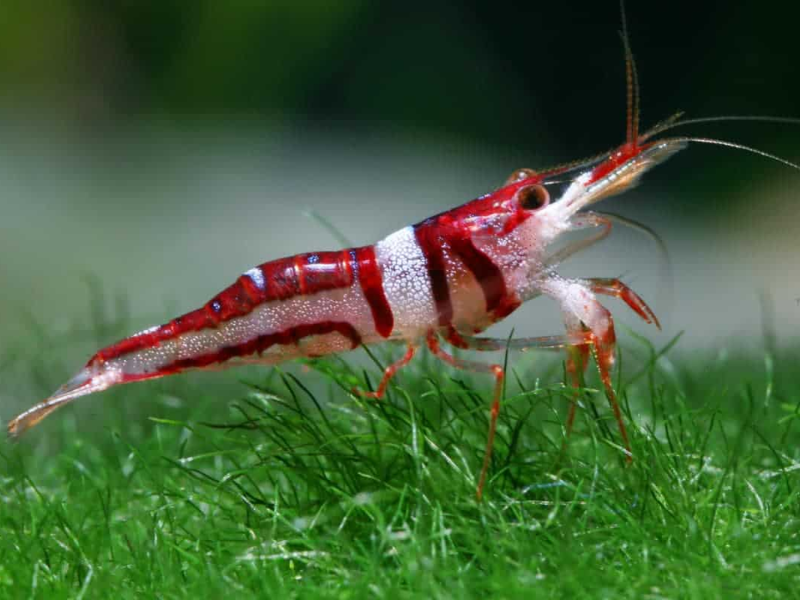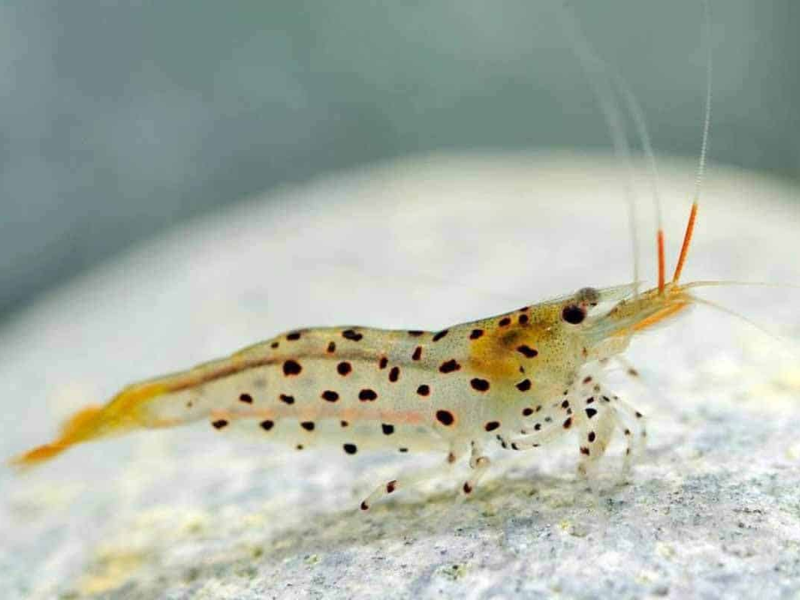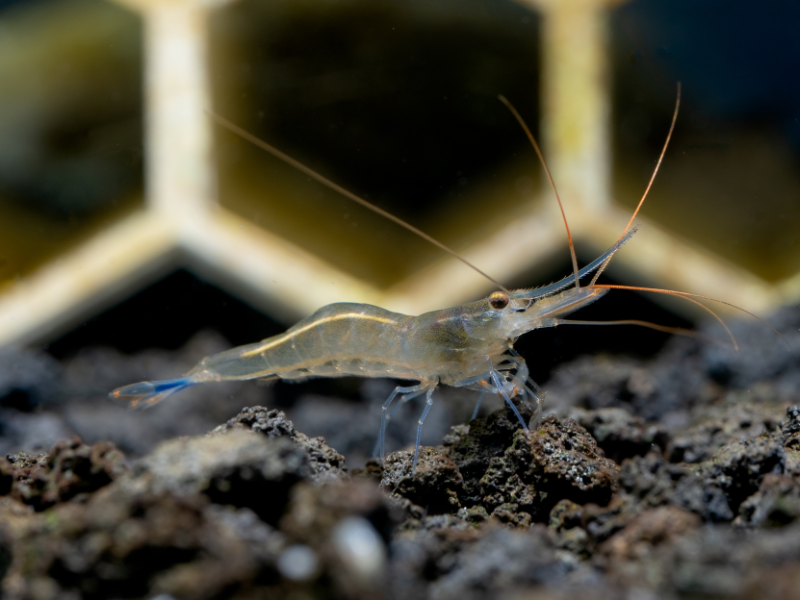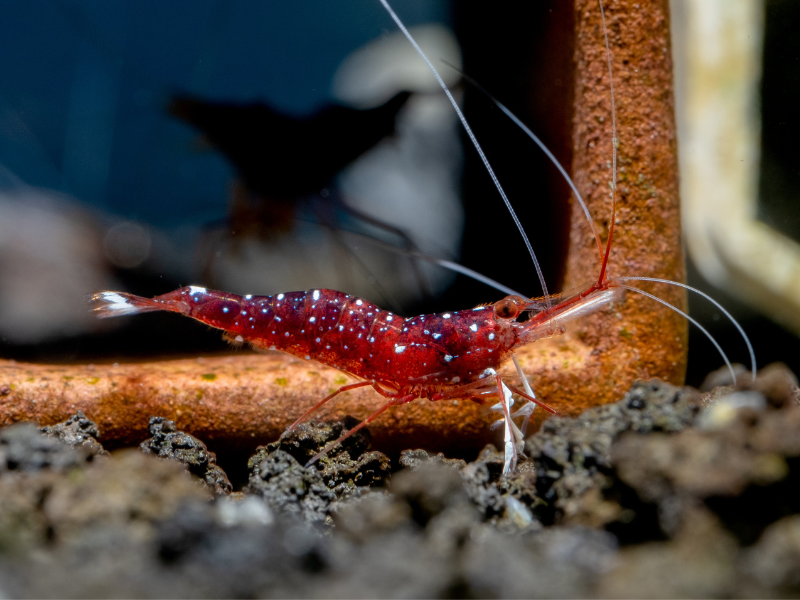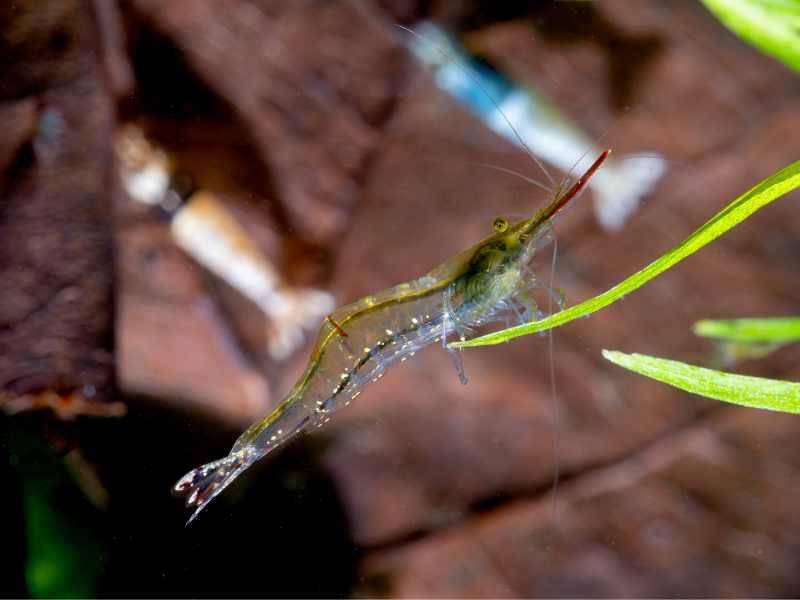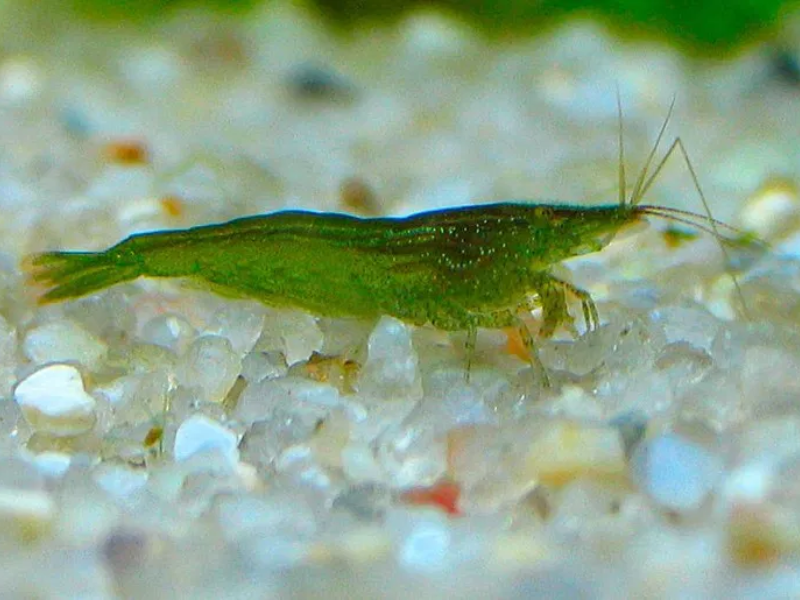Caridina propinqua
Malawa Shrimp
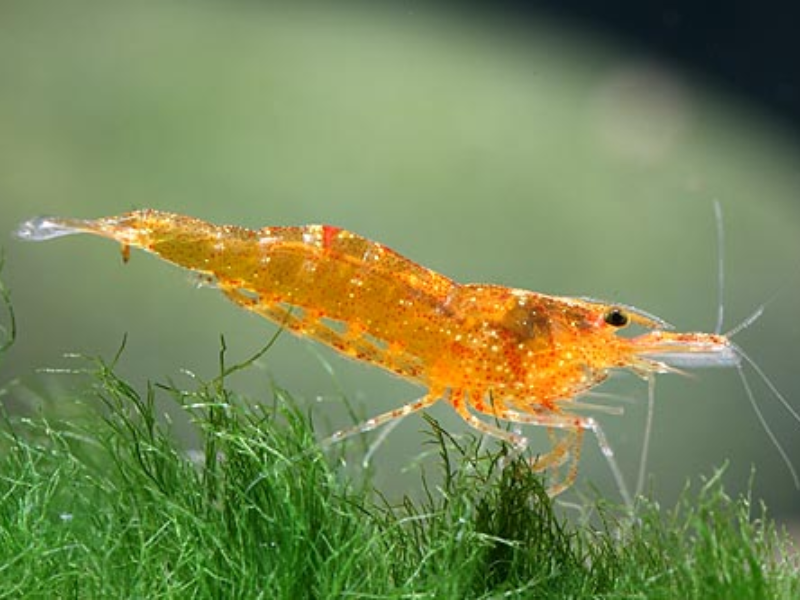
Scientific Classification
Quick Stats
Aquarium Building Information
About This Species
Basic Description
Detailed Description
Caridina propinqua, commonly known as the Malawa Shrimp, is a highly adaptable and resilient freshwater decapod originating from the freshwater systems of Asia, particularly associated with the Sulawesi region. In their natural habitat, they inhabit slow-moving streams and ponds, which informs their preference for low-flow conditions in an aquarium. Their hardiness makes them an excellent species for both novice and experienced aquarists.
These shrimp exhibit classic scavenger behavior, dedicating most of their time to exploring the bottom and middle strata of the aquarium. They are constantly in motion, sifting through the substrate and searching surfaces for food. This activity is not just for show; they serve a valuable function as a clean-up crew, consuming detritus, uneaten fish food, and nuisance algae. As social creatures, they thrive in groups and display more natural behaviors when kept in a colony. A group setting provides them with a sense of security, reducing shyness and allowing them to forage openly. Physiologically, they have a low metabolism and produce very little waste, resulting in a minimal impact on the tank's bioload, which is a significant advantage in smaller or heavily planted setups.
For optimal care, a mature aquarium is recommended. While they can adapt to a broad spectrum of water parameters, they do best in a stable environment. A tank with ample surfaces for biofilm growth, such as driftwood, leaf litter, and live plants, will provide natural foraging opportunities and shelter. This mimics their natural environment and supports their well-being. Their diet is straightforward; as omnivores, they will consume almost anything they find. This should be supplemented with high-quality sinking pellets, wafers, and occasional blanched vegetables to ensure a complete nutritional profile. Due to their small size and peaceful nature, they are vulnerable to predation. Tank mates must be chosen with extreme care, limited to other dwarf shrimp, snails, and very small, peaceful fish that will not view them as a food source.
Scientific Description
Caridina propinqua is a species of freshwater atyid shrimp belonging to the order Decapoda. This species is part of the highly diverse Caridina genus, which includes many popular aquarium inhabitants. Native to Asia, C. propinqua is particularly noted for its presence in Sulawesi, an area recognized as a global hotspot for freshwater crustacean biodiversity. Its body morphology is fusiform, or spindle-shaped, which is a common form for benthic and semi-benthic caridean shrimp, allowing for efficient movement along substrates.
Ecologically, C. propinqua fills the role of a detritivore and micro-predator. In its natural habitat, it is a primary consumer of biofilm and detritus, contributing significantly to nutrient cycling by breaking down organic matter. This feeding behavior is a key component of its ecological niche, helping to maintain the health of its aquatic ecosystem. Physiologically, the species is characterized by a low metabolic rate, which corresponds to very low oxygen consumption and minimal waste production. This low bioload factor makes it an exceptionally efficient organism, capable of thriving in high densities without placing significant stress on its environment.
One of the most notable characteristics of C. propinqua is its environmental resilience. Compared to many sympatric Caridina species that require very specific and narrow water parameters, C. propinqua demonstrates a remarkable tolerance for a wider range of pH levels and water hardness. It is a true freshwater species but can withstand very low levels of salinity, a trait that may be linked to adaptations for life in coastal or estuarine-adjacent freshwater bodies where salinity can fluctuate. Its robust nature and adaptability have contributed to its success, and it is currently listed as a species of 'Least Concern' on the IUCN Red List, indicating a stable and widespread wild population without immediate conservation threats.
Breeding Description
Breeding the Malawa Shrimp is considered easy and is often one of the first successful breeding experiences for new shrimp keepers. Their prolific nature means that a small founding group can quickly develop into a thriving colony under the right conditions. This species utilizes a direct reproductive strategy, which is a key factor in its ease of breeding. The female carries a clutch of eggs under her abdomen, attached to her pleopods (swimmerets), for several weeks. Once the incubation period is complete, the eggs hatch into fully formed, miniature versions of the adult shrimp. These shrimplets are immediately self-sufficient and do not go through a free-swimming larval stage that would require specialized care or brackish water, making the process straightforward in a standard freshwater aquarium.
Sexing adult Malawa Shrimp can be done by observing differences in size and body shape. Mature females are typically larger and more robust than males. The most definitive feature is the female's deeper, more rounded abdominal plates, which form a protected cavity for carrying eggs. A 'saddle,' which is the mass of undeveloped eggs visible through the carapace on the female's back, may also be present before she molts and mates. Males, in contrast, are smaller, more slender, and have a straighter underbelly. To establish a breeding colony, starting with a group of ten or more individuals is recommended to ensure a healthy mix of both sexes.
To encourage breeding, maintain stable, warm water and a consistent food supply. The presence of ample biofilm and microorganisms in a mature tank is critical for the survival of the newly hatched shrimplets. They are incredibly small and will spend their first few days and weeks grazing on surfaces. Dense vegetation, particularly mosses like Java moss or Christmas moss, provides an ideal environment, offering both food and protection from potential predators or strong filter currents. Ensure any filter intake is covered with a fine sponge to prevent the tiny shrimplets from being drawn in.
Generate Printable Card
Create a printable card for this creature to display in your store or aquarium. The card includes a QR code for quick access to more information.
